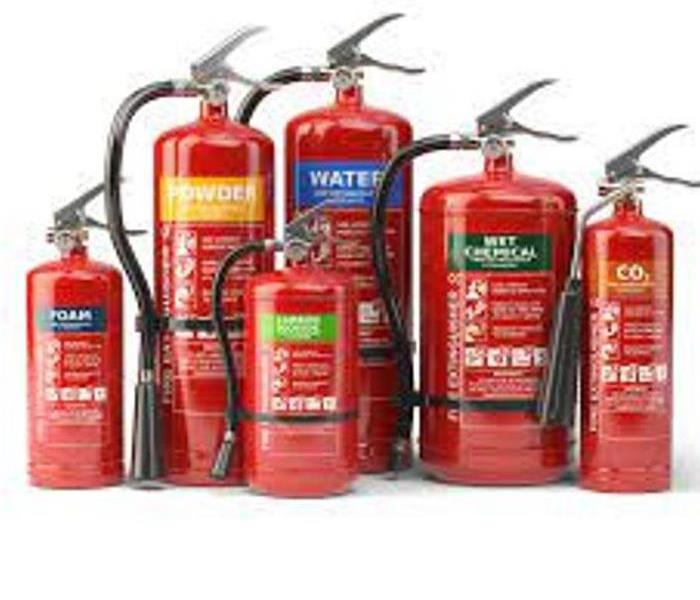Fire Extinguisher Cleanup
7/27/2021 (Permalink)
Are all fire extinguishers created equal? The answer is no. Fire extinguishers are similar to cars. There are many different makes and models that differ in design, quality, durability, serviceability, and function. However, they all have one common purpose: to quickly and effectively stop a fire from spreading.
The different types of fire extinguishers have specific requirements for cleaning the extinguishing agent after discharge. Below we’ve identified a few types of fire extinguishers and how to properly dispose of any residue left behind.
DIFFERENT TYPES OF EXTINGUISHERS INCLUDE:
- Dry Chemical Fire Extinguisher – Compact and portable designs make these extinguishers best qualified for the protection of minor hazards in industrial and commercial settings.
- Wet Chemical Fire Extinguisher – By incorporating a flexible design and effective liquid agent, this extinguishing system quickly reduces flames and cools hot surfaces specifically in foodservice kitchens.
- Clean Agent Fire Extinguisher – This extinguisher is commonly used in areas with sensitive computer equipment (e.g. server rooms) because the discharge dissipates into the atmosphere.
- Class K Fire Extinguisher – With the ability to hold in vapor and steam from a fire, this extinguisher is used in commercial kitchens for grease fires.
CLEAN-UP RECOMMENDATIONS
While fire extinguisher discharge does not usually present health hazards, the experts at State Systems want you to be prepared. That being said, do you know how to properly clean up the leftover residue after your fire extinguisher is put to use?
DRY CHEMICAL FIRE EXTINGUISHER
- Sweep or vacuum any residue that has settled on the affected area.
- To break down the silicone in the dry chemical, spray the affected area with a solution of 50% isopropyl alcohol and 50% warm water. Allow the solution to penetrate the residue for a few minutes, then rinse with warm water.
- To neutralize sodium bicarbonate and potassium bicarbonate-based dry chemicals, wash the affected area with a solution of 98% hot water and 2% vinegar. Allow the solution to sit for a few minutes; then rinse with warm water.
- To neutralize mono ammonium phosphate-based dry chemical, wash the affected area with a solution of hot water and baking soda. Allow the solution to treat the excess agent for a few minutes, then rinse with warm water.
- Wash the area with a mild soap and water solution; then rinse.
- Blow the area dry to remove excess water.
WET CHEMICAL FIRE EXTINGUISHER
- Confirm all fuel sources to the equipment have been shut off.
- Make sure to wear rubber gloves. If the liquid or fire extinguishing agent comes into contact with your skin or eyes, flush thoroughly with water.
- Use hot, soapy water and a cloth or sponge to wipe away the foamy residue. Scrub all surfaces that have come into contact with the excess agent.
- Once all surfaces impacted with the residue are cleaned, rinse and allow time to dry before returning power back to the equipment.
CLEAN AGENT FIRE EXTINGUISHER
No special precautions need to be taken after the fire extinguisher is used.
CLASS K FIRE EXTINGUISHER
Rinse the affected area with a solution of soap and water.
ADDITIONAL CLEANING TIPS
- Items such as artwork, tapestries, and electrical equipment need to be professionally cleaned to avoid further damage.
- Be extra cautious when treating cooking equipment and food storage during the cleanup process.
- Immediately recharge or replace your fire extinguisher





 24/7 Emergency Service
24/7 Emergency Service
